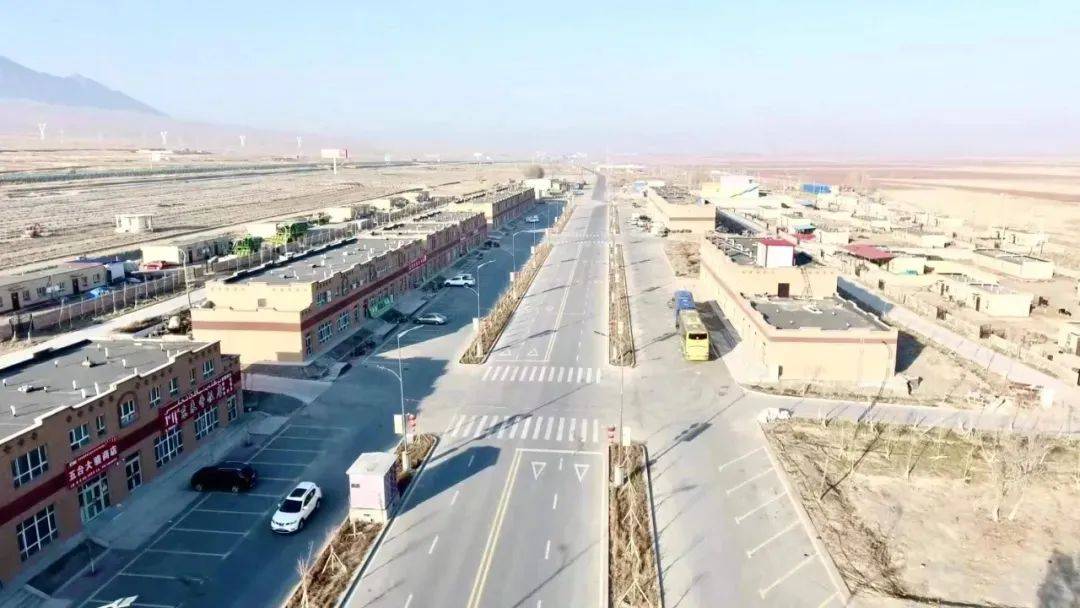Nostalgia in the Folk Ancestral Hall
Author:China Social Sciences Network Time:2022.07.05
The concept of clan is a social value concept formed in the Chinese land. In reality, the "Emperor's Temple" and "Folk Ancestral Hall" are two important carriers of the "clan". In particular, the "Folk Ancestral Hall" is like the imprint of a kind of nostalgia memory, and it is more like a "folk seal" stamped with the local villages of the Chinese land, which gives academic research a rich and beautiful inquiry direction.
The ancestral temple flows: from the home of the family, the social functions are dependent. Tracing the ancestral temple and the ancestral temple, it can reach the late stage of the primitive society. "Ancient and Modern Book Integration · Zongmiao Memorial" records: "Emperor Gao Gao Xin's beginning of the temple", "Emperor Yao as the Seven Temples to enjoy the ancestors", "Emperor Shunli Seven Temples", "Summer System for Tang Yu Li Temple", "Yin Yin", "Yin Yin" "Seven Temples" and so on.
On the basis of the segmentation system and the ancestral law system, the Zhou Dynasty established a ritual system with the ancestral temple as the core. The Zhou etiquette system stipulated that: the emperor set the seven temples, the three Zhao and the three Mu, and the temple of Taizu was seven. There can also be a home temple above the or above, and most of the officers of the descendants have also built a temple. This is also a sign of the birth of the Chinese ancestral hall. The Han Dynasty ancestral hall was usually built next to the grave, so there was a tomb. After the formation of the ritual system of the family temple in the Tang Dynasty, the place where the ancestors worshiped in the Song Dynasty were called the "Family Temple". With the rise and development of Cheng Zhuxue, the ancestral hall, as a place for respect ancestors, Jingzong, and clubs, assumed the function of social education. Zhu Xi wrote the "Family Li" discussed the system of the ancestral hall and the etiquette of sacrifice, forming a relatively complete home temple system.
The Emperor's Temple is inherited in an orderly manner due to the attractive attention. Although the folk ancestral temple has no rolling of the huge classics, it also has a rich and widely -wide folk foundation and emotional bond. This kind of folk ancestral temple that is "far away from rivers and lakes" is everywhere, witnessing and maintaining traditional culture and rural civilization composed of family -based society.
The long Chinese society, which is dominated by farming civilization, explores the ancestral temple culture on the premise of homogeneity at home. First of all, we must first understand the special clan culture of Chinese society. The clan is a social unit of geography and blood relationships and the same clan. The ancestral temple is the center of blood worship, clan condensation, and clan culture. It is also an important symbol of nostalgia. In the traditional Chinese society, the ancestral temple culture assumes the social functions of Zhaozu Nianxian, Enlightenment, Moral Education, and the inheritance of clan culture, which reflects the conscious pursuit of moral temples and users of the ancestral temple.
In the process of the development of historical trends and modern civilization, in the process of moving for the countryside of China and the city, the folk ancestral temple uses the countryside and the countryside as the soul -habitat. For the traditional Chinese cultural psychology that advocates the "falling leaves", the folk ancestral temple also constitutes a strong spiritual resonance between its hometown and foreign towns, natives and cities, overseas and overseas.
Investigation of Ancestral Hall: Cultural narrative from architectural space. Compared with the emperor's temple and the rich gangsters, the folk ancestral temples in the Jin and Shaanxi areas also have both the effect of the temple and the compatibility of the rivers and lakes. At the same time, the diverse interpretation of traditional and folk culture has been developed.
Most of the folk ancestral temples in this region are three -entered and two -house ancestral halls. The spatial layout is mainly based on the fence courtyard, forming a typical space mode of internal openness and external isolation. The central axis in the building is clear, and the layout on the axis is the gate, Xiangtang, and the main hall. When constructing the ancestral temple, the layout and structure of the mid -axis must be followed. The main building building is arranged on the central axis, and the two sides of the compartment and corridor are served on both sides, and the left and right are symmetrical. From the first gate of the building to worshiping the ancestor of the ancestor, to the dormitory of the ancestor's spiritual throne, it was built from low to high, creating a gradual space change rhythm.
The building layout is magnificent, and the building decoration is more lush. Decoration can be divided into decoration and drawing, and the text part is reflected in the enlightenment function of plaques and couplet calligraphy. The plaque is the most direct and finishing touch in all the expression language of the ancestral temple building. For example, the narrative of the plaque of the Lijiazong Temple in Yanjing Village, Wanrong County, Shanxi Province, and the "Zhao Zu Nian Xian" of Xian Temple from entering the mountain gate "Zhao Zu Nian Xian" and "Wan Shan Tong" and then to the dormitory "Si Siyanqing", from Inheriting the ancestor's achievements to Wan Shan to return to Germany and then to the descendants, it shows the narrative logic of a ancestral temple culture. The couplet seems simple, but it is a realistic statement through thousands of refined. The couplet of brick carving books on the mountain walls of the Northern Ancestral Hall of the Changjia Hall in Shanxi "Zuo Zhaoyu Mu, prefaced a family source of generations. "Filial piety" "Spring Festival Taste in the autumn, follow the etiquette and music of all ancient sages, steal the color and gentleness, filial piety and be smooth and smooth, and the love and loyalty are expressed in the heart. A reflection. It can be seen that the ancestral hall building planning and "filial piety" follows the extensive use of "filial piety", and runs through the entire process of the construction of the ancestral temple, so that people can experience the spatial narrative relationship between the ancestral temple space.
The picture is reflected in the painting of woodcarving, brick carvings, and murals. For example, Han Laowu Village, Han Laowu Village, Zhouhe Township, Xinxian County, Xinxian County, Xinyang City, Henan Province, five blessings in the mountain gate, the five blessings of the brick carving walls, and five bats with different forms around the life. : Yifu, Ershou, San Corning, Si Ho De, Wushan End. Good virtues can end well. Educational descendants can use virtue to do good, and jointly convey the family emotions of the family's family and the ancestors.
Protection of Ancestral Temple: The revitalization of the countryside by the symbol of the nostalgia. In the Yellow River, the Yellow River can be described as "above the big river, among China". It is the birthplace of Yangshao culture and Chinese civilization. It has deep historical heritage and cultural connotation. The pulsation is destined to leave a lively chapter here. The folk ancestral temple here has undergone a long -term change, many ancestral temple buildings have been destroyed, and culture has been impacted. Through the field survey of the 3155 folk ancestral temples of 7 provinces, it was found that the overall protection was not optimistic, and nearly one -third of the folk ancestral temple had collapsed. At present, the 80 -year -old Xiangxian elderly people still retain some space memory of the ruined ancestral temple. Over time, these memories will also disappear.
From the pastoral to the city, from the countryside to China to the city, from the revitalization of the countryside to the national rejuvenation, each ancestral temple has endless stories. An important place for tracing the source and looking for the roots to ask ancestors.
"The ancestral hall is a lively relic on the earth, the authentic Chinese national essence, the most unique 'Chinese seal' in one side ... The ancestral hall is the exhibition hall that stores our nostalgia, and it is a habitat for our soul." In the past, the traditional Chinese family system has always been intertwined in the concept of life and ideals with idyllic flavors. This kind of idyllic life concept, the attitude of life to return to the true life, and the lifestyle that is blessed to avoid disaster explains the happiness of the Chinese. Facing the prosperous and busy urban life today, and the return and return of the countryside and home, it is also a kind of infinite vision and longing for "Chinese nostalgia".
Why is the nostalgia the most China? It is not only the improvement and recovery of green ecology of green mountains and natural scenery, but also a kind of inheritance and construction of the countryside, nostalgia, rural style, public opinion, public heart, and folk customs of traditional Chinese culture. In the ancestral temple, we can find the emotional support for the "home" and the "family", and it is the journey of this journey that enables the feelings of "home" and "clan" to "national" to be sublimated and inherited. It can be said that the nostalgia in the folk ancestral temple is the spirit of the traditional Chinese culture and the poetic chapter.
(The author is the head of the National Social Science Fund Project "The Research on the Research on the Research on the Research on the Cultural Heritage of the Folk Ancestral Hall in the Jinanxi and Henan Highness Region" and the professor of the School of Art of Xi'an University of Architecture and Technology)
Source: China Social Science Network-Journal of Social Sciences of China
Author: Wang Yanhua
- END -
New appearance in the countryside | Wutai Ancient Station ushered in new opportunities for development

Pomegranate/Xinjiang Daily reporter Song YawenAfter leaving Jinghe County to trave...
@, China Post issued a traceable stamp for the first time!

China Post issued special stamps for Hydropower Construction on the 28th. This is ...